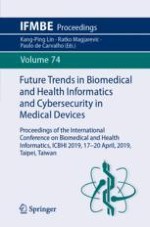2020 | OriginalPaper | Chapter
Raman Spectroscopic Urine Crystal Detection and Clinical Significance Study on Urolithiasis Management
Authors : Chih-Hao Wang, Jing-Xiang Zeng, Pin-Chuan Chen, Hui-Hua Kenny Chiang
Published in: Future Trends in Biomedical and Health Informatics and Cybersecurity in Medical Devices
Publisher: Springer International Publishing
Activate our intelligent search to find suitable subject content or patents.
Select sections of text to find matching patents with Artificial Intelligence. powered by
Select sections of text to find additional relevant content using AI-assisted search. powered by
